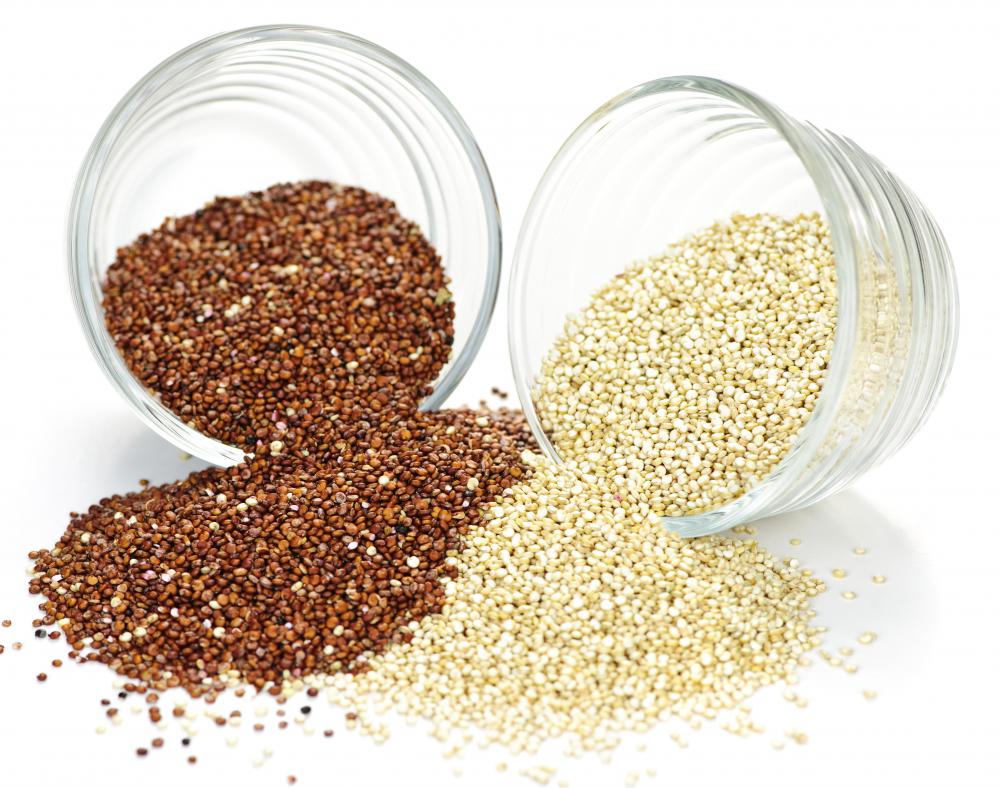At HomeQuestionsAnswered, we're committed to delivering accurate, trustworthy information. Our expert-authored content is rigorously fact-checked and sourced from credible authorities. Discover how we uphold the highest standards in providing you with reliable knowledge.
What is Goosefoot?
Goosefoot can refer to any one of more than 100 species of flowering plants in the genus Chenopodium and amaranth family that grow in nearly all of the earth’s climates but especially in temperate zones. The species name derives from the fact that many of the plants have leaves that appear to be shaped like a goose’s foot. Goosefoot is not always a welcome plant since the majority of varieties such as lamb’s quarter or pigweed are considered to be weeds with an unpleasant smell. However there are a few varieties such as Jerusalem oak or feather geranium that produce small flowers favored by gardeners. Goosefoot can be an annual or perennial plant and several varieties such as quinoa and strawberry bite are cultivated as a food or cash crop or for medicinal purposes.
There is much variety among the species of goosefoot. Some species grow tall while others creep along the ground or grow in thickets. A few species produce colored or white blooms and others boast leaves tinged with red or white. Commonly considered to be a weed, goosefoot seeds can survive for many years in the soil before germinating. Despite the perception that goosefoot is weedy, the leaves can provide shelter for small animals and food for certain insects and caterpillars while various bird species consume the seeds.

Chenopodium album is a species of goosefoot commonly known as fat-hen or white goosefoot that is grown extensively in regions such as Northern India where the leaves have various culinary uses. The leaves are often consumed like spinach and frequently steamed and added to curries, soups or served with potatoes and onions or in stuffed breads. In Northern Europe and North America, fat-hen is commonly considered to be a weed while the leaves are used in traditional African medicine. The stalk can reach a height of more than 4 feet (1.2 meters) and when hardened can be used as a walking stick, which is common in China.

The seeds of some goosefoot plants can be used to make products for people that eat a gluten-free diet. Quinoa oil made from the gluten-free seeds of the quinoa plant can be used like any vegetable oil to cook and fry food or as an ingredient in salad dressing. Quinoa can also be used to make cereal flakes and flour or the seeds can be cooked like rice and eaten as a meal or side dish. Although goosefoot seeds may be valuable, the pollen is an allergen for many people and inhaling it can result in hay fever.
AS FEATURED ON:
AS FEATURED ON:















Discuss this Article
Post your comments